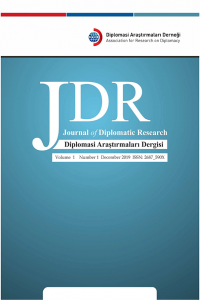Abstract
In 1991, the United Nations Security Council set up a weapons inspection and disarmament regime of Iraq
that remained intact for several years before withering under bureaucracy. After the terrorist attacks of
September 11, 2001, the success and failures of this regime were brought into focus as President George
W. Bush established leadership at the United Nations and announced an international war on terror. The
U. S. deemed these inspections, together with their contemporary incarnation, as less than satisfactory.
The result was an obstinate administration, unrestrained by the end of the Cold War, in pursuit of what
they deemed an unacceptable threat. The decision to go to War with Iraq ultimately was driven by Bush's
belief that Saddam's intentions as Iraqi leader were far more important than his actual capabilities.
Keywords
References
- Bacevich, A. J., (2002). American Empire: The Realities and Consequences of U.S. Diplomacy. Harvard University Press, p. 225.
Abstract
In 1991, the United Nations Security Council set up a weapons inspection and disarmament regime of Iraq
that remained intact for several years before withering under bureaucracy. After the terrorist attacks of
September 11, 2001, the success and failures of this regime were brought into focus as President George
W. Bush established leadership at the United Nations and announced an international war on terror. The
U. S. deemed these inspections, together with their contemporary incarnation, as less than satisfactory.
The result was an obstinate administration, unrestrained by the end of the Cold War, in pursuit of what
they deemed an unacceptable threat. The decision to go to War with Iraq ultimately was driven by Bush's
belief that Saddam's intentions as Iraqi leader were far more important than his actual capabilities.
References
- Bacevich, A. J., (2002). American Empire: The Realities and Consequences of U.S. Diplomacy. Harvard University Press, p. 225.
Details
| Primary Language | English |
|---|---|
| Subjects | Political Science |
| Journal Section | Research Articles |
| Authors | |
| Publication Date | December 31, 2019 |
| Submission Date | September 1, 2019 |
| Published in Issue | Year 2019 Volume: 1 Issue: 1 |


